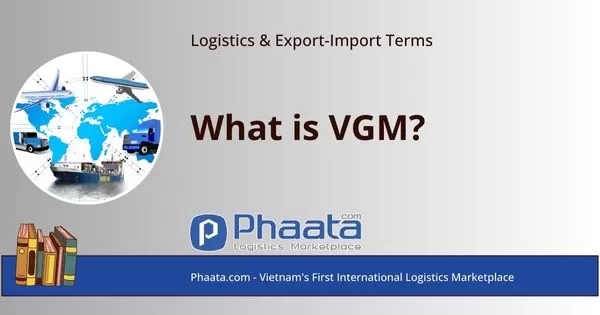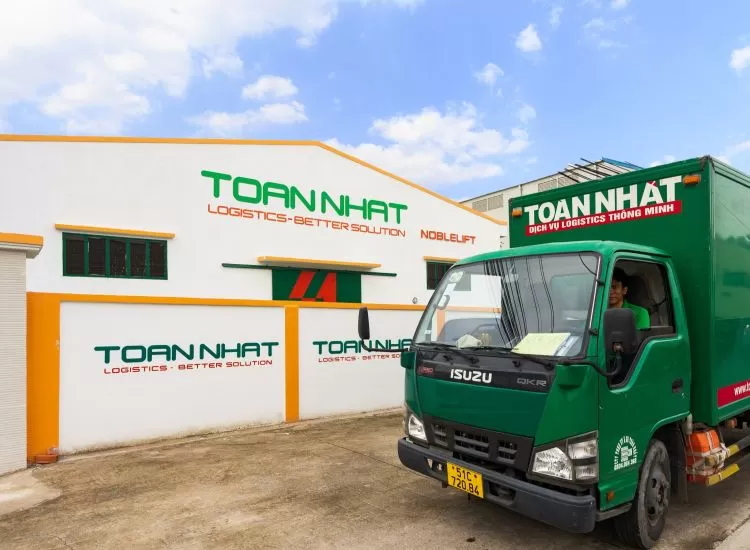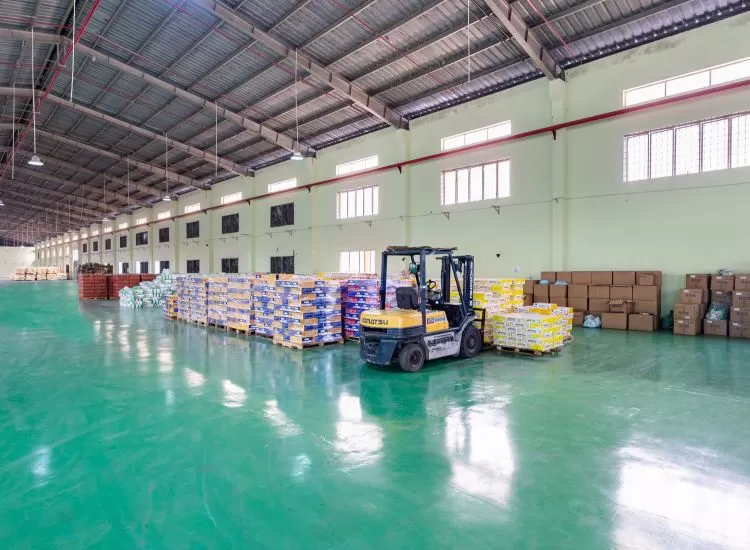
In the maritime transport industry, VGM (Verified Gross Mass) is a critical parameter that directly impacts the safety of the entire journey. Accurate VGM declaration is not only a mandatory requirement but also a shared responsibility among stakeholders to ensure the safety of people, cargo, and the environment. Let’s explore the concept of VGM and the declaration process in detail through this article by Phaata Logistics Exchange.
1. What is VGM?
VGM (Verified Gross Mass) refers to the total weight of a loaded container, including:
- The weight of the cargo inside the container,
- The weight of packaging, dunnage, and securing materials,
- The tare weight of the container itself.
The regulations for VGM were introduced in the Safety of Life at Sea (SOLAS) Convention by the International Maritime Organization (IMO) and came into effect on July 1, 2016. Under these regulations, the shipper is responsible for determining and declaring the accurate VGM to the carrier before the container is loaded onto the ship.
2. Importance of VGM in Maritime Transport
VGM plays a vital role in ensuring the safety and efficiency of maritime operations:
- Maritime Safety: Accurate VGM declaration enables carriers to safely stow containers, ensuring vessel stability during transit and preventing incidents such as imbalance, container collapse, or crane failure.
- Optimized Loading: VGM data allows ports and terminal operators to plan and allocate resources effectively, avoiding overloading or wasting space and time.
Compliance with International Regulations: Declaring VGM is a mandatory requirement under the SOLAS Convention. Non-compliance can result in containers being denied loading, penalties, or legal issues, ultimately impacting business reputation.
- Environmental Protection: Safe container stowage, facilitated by precise VGM data, helps prevent cargo spills and safeguards marine environments.
- Enhanced Credibility and Responsibility: Accurate VGM declaration reflects the shipper’s professionalism and responsibility, strengthening relationships with partners in the supply chain.
3. The VGM Declaration Process
The VGM declaration process involves the following steps:
Step 1: Determine VGM
The shipper is responsible for determining the VGM using one of two methods:
- Method 1: Weigh the packed container after loading is completed.
- Method 2: Calculate the VGM by weighing the cargo, packaging, dunnage, and securing materials separately, then adding the tare weight of the container.
Step 2: Prepare the VGM Declaration Document
The shipper must complete the VGM declaration with the following information:
- Shipper, consignee, and carrier details, container number, seal number, date of weighing, and method used to determine VGM...
- Signature of the authorized individual.
Step 3: Submit the VGM to the Carrier
The shipper must submit the VGM declaration to the carrier within the specified deadline (usually before the container enters the terminal). This can be done via email, the carrier’s online portal, or other agreed methods.
Step 4: Carrier Confirms and Uses VGM Data
The carrier verifies the VGM information and uses it for container stowage planning to ensure vessel safety and stability during transit.
4. Key Stakeholders in the VGM Process
- Shippers: Primarily responsible for determining and declaring accurate VGM.
- Carriers: Receive VGM data from shippers, verify its validity, and use it for container stowage.
- Freight Forwarders: Assist shippers in VGM declaration and related documentation.
- Port Authorities: Monitor and enforce VGM compliance by shippers and carriers.
- Maritime Authorities: Oversee the implementation of VGM regulations and handle violations.
5. Frequently Asked Questions about VGM
1. Is VGM declaration mandatory?
Yes, declaring VGM is mandatory for all containers transported by sea under the SOLAS Convention.
2. Who is responsible for declaring VGM?
The shipper is primarily responsible for determining and declaring VGM.
3. When should VGM be declared?
The VGM must be declared to the carrier within the specified deadline, typically before the container is delivered to the port.
4. How is VGM determined?
Weighing the Packed Container: Shippers can weigh the loaded container at public weighbridges or use mobile weighing services.
Calculating VGM: Shippers weigh each item, including packaging and securing materials, and add the container’s tare weight to determine the total.
5. Can VGM be amended after declaration?
Yes, amendments to VGM are allowed in case of errors or changes to the cargo. However, revisions must be made before the deadline and communicated promptly to the carrier.
6. Conclusion
VGM (Verified Gross Mass) is a critical requirement in maritime transport aimed at ensuring the safety of vessels, crew, and cargo. Adhering to VGM regulations is not just a legal obligation but also offers numerous benefits to all supply chain stakeholders. By understanding and accurately declaring VGM, shippers can mitigate risks, avoid unnecessary complications, and contribute to the sustainable development of the maritime industry.
If you’re seeking reliable logistics companies for consultation or have any service inquiries, submit a quotation request on the Phaata Logistics Marketplace. Receive multiple competitive quotes and expert advice to secure the best rates and services for your needs.
We hope this article by Phaata has provided valuable insights into VGM.
Phaata wishes you success!
Source: Phaata.com
Phaata.com - Vietnam's First International Logistics Marketplace
► Find Better Freight Rates & Logistics Services!
























.webp)










.webp)